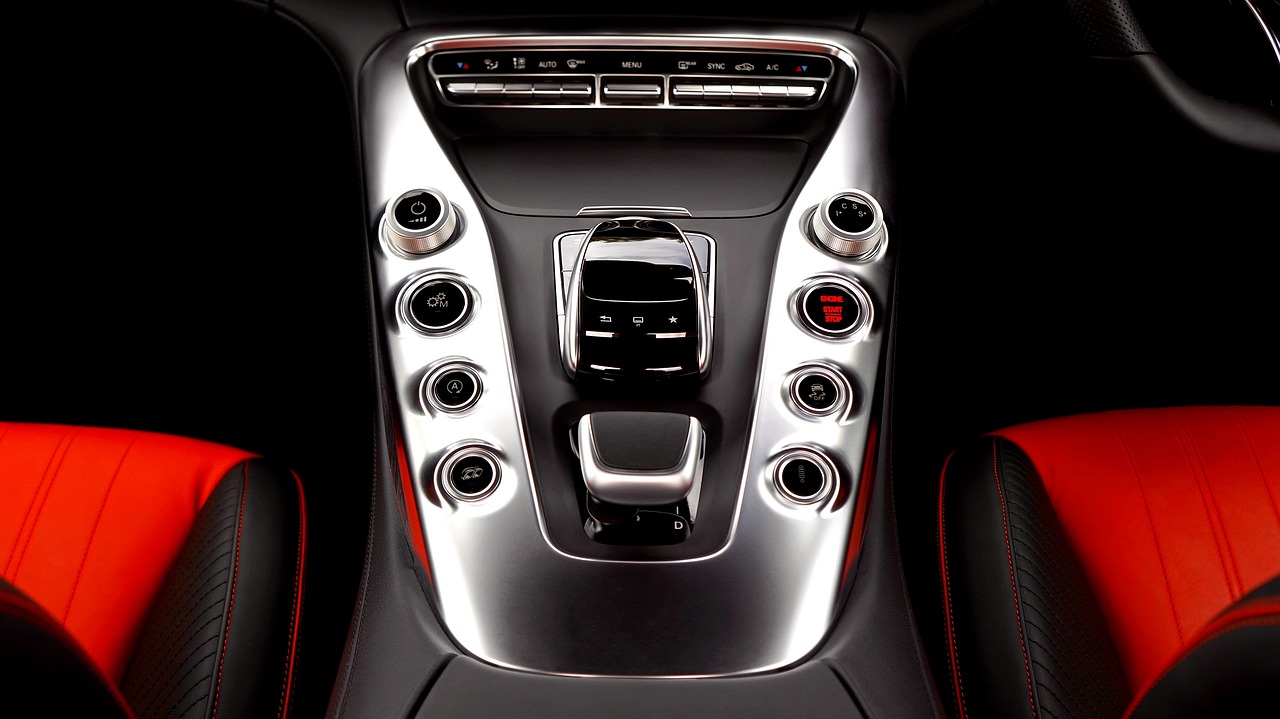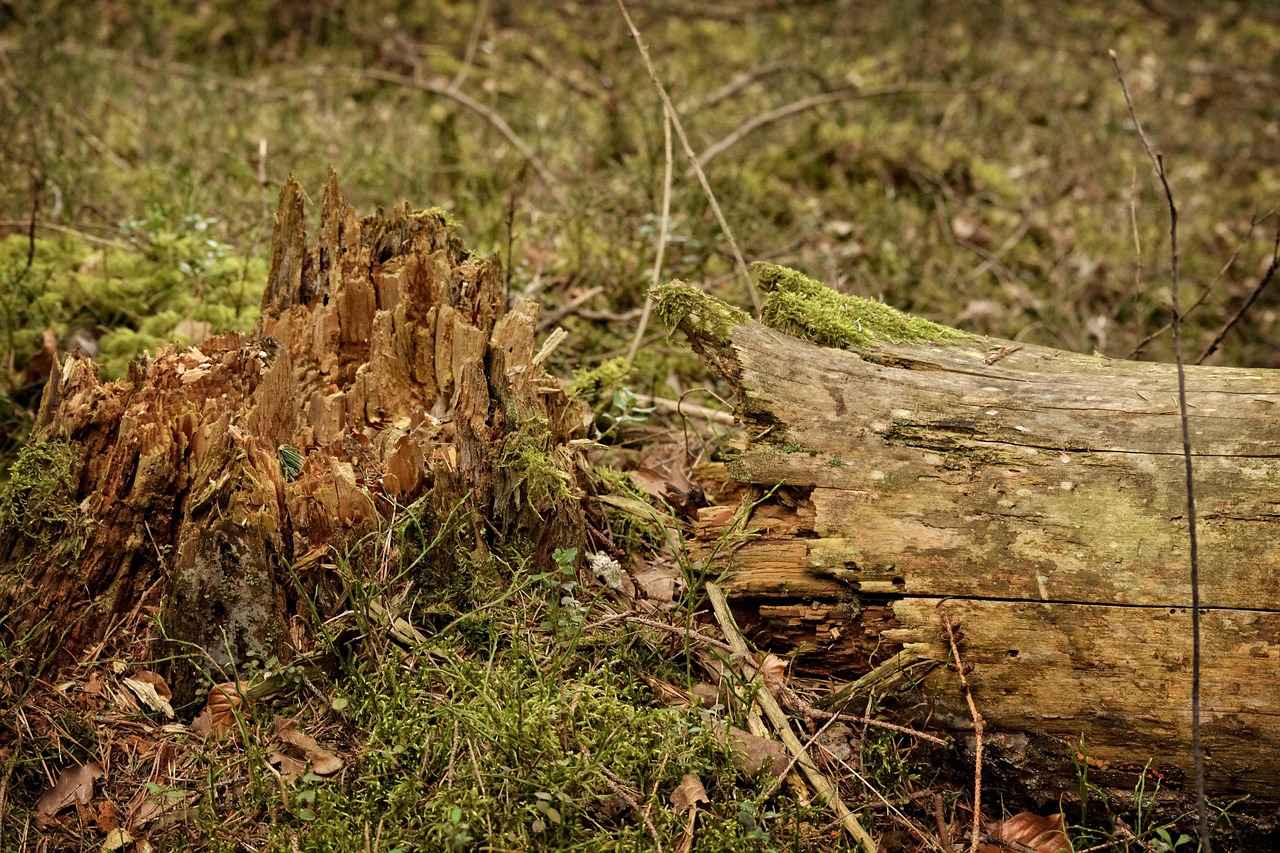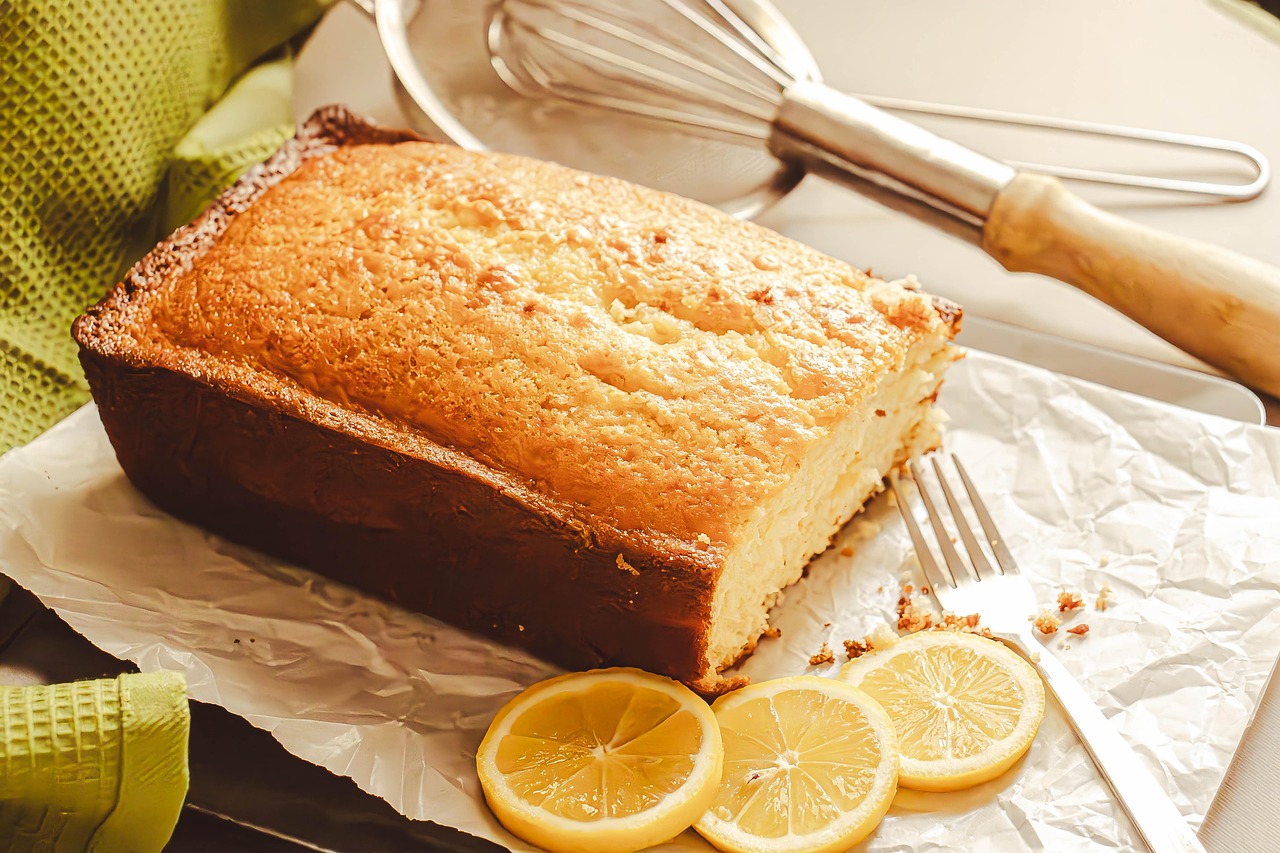This article provides a comprehensive analysis of the costs associated with painting a car bumper, including factors influencing the price, DIY tips, and professional services.
Understanding the various factors that affect the price of bumper painting can help you budget effectively. Key elements include:
- Bumper Material: Different materials such as plastic, metal, and fiberglass have varying preparation and painting requirements.
- Paint Quality: Higher-quality paints often come with a higher price tag but can offer better durability and finish.
- Labor Costs: Local market rates for professional services can greatly influence the overall expense.
Many car owners consider DIY painting to save money. However, it’s essential to weigh the pros and cons:
- Advantages: Cost savings, flexibility in scheduling, and the satisfaction of completing a project yourself.
- Disadvantages: Potential for a subpar finish, the need for specific skills and tools, and time investment.
Before embarking on a DIY project, it’s essential to gather the right supplies. Key items include:
- Automotive Paint: Choose a color that matches your vehicle.
- Primer: Necessary for proper adhesion and finish.
- Sandpaper: For surface preparation.
- Protective Gear: Masks, gloves, and goggles to ensure safety during the process.
Preparation is key to achieving a professional finish. Essential steps include:
- Cleaning: Remove dirt and grease to ensure proper paint adhesion.
- Sanding: Smooth the surface for an even application.
- Masking: Protect other areas of the vehicle from overspray.
Learning the right techniques can greatly enhance the final appearance. Consider the following:
- Spray Painting Methods: Use even strokes and maintain a consistent distance from the surface.
- Layering: Apply multiple thin coats rather than one thick coat for better results.
- Drying Times: Allow adequate drying time between coats to prevent runs and drips.
While DIY can be cost-effective, certain situations warrant professional help. Consider hiring an expert if:
- Your bumper has significant damage that requires repair.
- You lack the necessary skills or tools for a quality finish.
- You want a warranty or guarantee on the work performed.
Knowing the typical price range for professional bumper painting can help you make informed decisions. On average, costs can range from:
- $300 to $1,000: Depending on the complexity and quality of the job.
- Location: Prices may vary based on geographic area and local demand.
Different bumper materials can significantly influence painting costs. For example:
- Plastic Bumpers: Generally easier and cheaper to paint.
- Metal Bumpers: May require additional preparation and cost more.
- Fiberglass Bumpers: Often need specialized techniques, increasing costs.
In addition to the base painting cost, there may be hidden fees. Potential extra charges include:
- Repairs: Fixing dents or scratches before painting.
- Color Matching: Ensuring the new paint matches the existing color.
- Warranty Considerations: Some services may offer warranties that can affect pricing.
Choosing the right paint is critical for durability and appearance. Consider options such as:
- Enamel Paint: Affordable and durable, suitable for many applications.
- Urethane Paint: Offers superior durability and finish but at a higher cost.
- Specialty Options: Consider options designed specifically for automotive use.
Investing in higher-quality paint can lead to better results. Premium paints typically offer:
- Enhanced Durability: Better resistance to fading and chipping.
- Improved Finish: A more attractive, glossy appearance.
Achieving the perfect color match can be challenging. Techniques include:
- Using Color Codes: Refer to your vehicle’s color code for accurate matching.
- Test Sprays: Always test paint on a small area before full application.

What Factors Influence the Cost of Painting a Bumper?
When it comes to understanding the costs associated with painting a car bumper, several key factors come into play. Knowledge of these elements can significantly aid in budgeting and decision-making processes. Below, we explore the various aspects that influence the overall cost of bumper painting.
- Bumper Material: The type of material your bumper is made from can greatly affect the painting cost. Common materials include plastic, metal, and fiberglass. Each material has its own preparation requirements and paint adherence characteristics. For instance, painting plastic bumpers often requires special primers and paints to ensure durability, which can increase the overall cost.
- Paint Quality: The quality of the paint used is another crucial factor. Higher-quality paints, such as urethane-based options, tend to cost more but offer better longevity and finish. Cheaper paints may save you money upfront but can lead to fading, chipping, or peeling over time, potentially necessitating a repaint sooner than expected.
- Labor Costs: Local labor costs can vary significantly based on your geographic location. In urban areas, you may find that professional services charge more due to higher demand and living costs. Additionally, the experience level of the technician can also influence labor rates. Skilled professionals with a good reputation might charge a premium for their services.
- Preparation Work: The amount of preparation required before painting can also impact costs. If your bumper has scratches, dents, or other imperfections, additional repair work will be needed, which can add to the total expense. Proper preparation is essential for achieving a high-quality finish, so it’s important to factor this into your budget.
- Location and Accessibility: The location of the repair shop can influence pricing as well. Shops located in high-rent districts may charge more compared to those in less expensive areas. Furthermore, if your vehicle requires towing to the shop, this additional cost should also be considered.
By being aware of these influencing factors, you can better prepare for the financial commitment involved in painting your bumper. Whether you decide to go the DIY route or hire a professional, understanding these elements will allow you to make informed choices that best suit your needs and budget.
In conclusion, various elements play a significant role in determining the cost of bumper painting. From the material and paint quality to local labor rates and preparation needs, each factor contributes to the overall expense. Careful consideration of these aspects can help ensure that you achieve a satisfactory and long-lasting result without exceeding your budget.
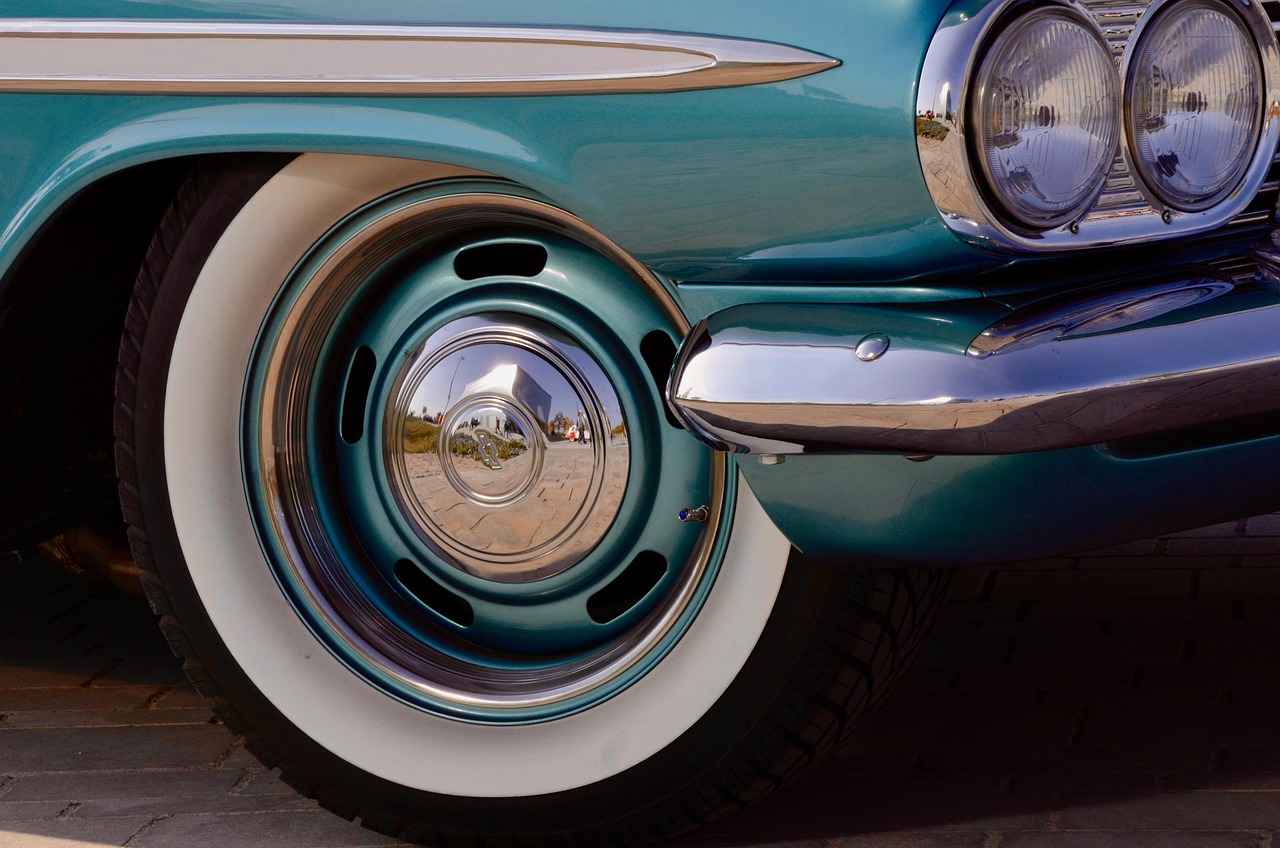
Is It Cheaper to Paint a Bumper Yourself?
When it comes to car maintenance, many owners seek ways to save money, and painting a bumper can be a significant expense. As such, the question arises: This section delves into the advantages and disadvantages of DIY bumper painting, along with the necessary materials and skills required for a successful project.
- Cost Savings: One of the most compelling reasons to paint your bumper yourself is to save on labor costs. Professional services can be expensive, often ranging from $300 to $1,000, depending on the quality of the work and the shop’s reputation.
- Flexibility: DIY painting allows you to choose your own timeline. You can work at your own pace, which can be particularly beneficial if you have a busy schedule.
- Learning Experience: Engaging in a DIY project can be rewarding. It provides a valuable opportunity to learn new skills and gain a better understanding of your vehicle.
- Quality Concerns: Achieving a professional finish can be challenging without the right skills and experience. Mistakes can lead to uneven paint application, which may require additional work to correct.
- Time-Consuming: While you have the flexibility to work at your own pace, DIY projects can take significantly longer than anticipated, especially if you are unfamiliar with the painting process.
- Safety Risks: Painting involves the use of chemicals and materials that can be hazardous. Proper safety gear, such as masks and gloves, is essential to protect yourself from harmful fumes and particles.
Before starting your DIY bumper painting project, it’s crucial to gather the right materials. Here’s a list of essential supplies:
- Automotive Paint: Choose high-quality automotive paint that matches your car’s color.
- Primer: A good primer helps the paint adhere better and improves the overall finish.
- Sandpaper: Various grits of sandpaper are necessary for surface preparation.
- Masking Tape: Use this to protect areas of your car that you don’t want to paint.
- Protective Gear: Safety goggles, gloves, and a mask are essential for your safety.
- Spray Gun or Spray Cans: Depending on your preference and skill level, you can choose either method for application.
While painting your bumper can be a cost-effective option, it does require a certain level of skill and preparation:
- Surface Preparation: Properly cleaning and sanding the bumper is vital for paint adhesion.
- Painting Technique: Learning how to apply paint evenly and at the right distance is essential for a smooth finish.
- Attention to Detail: Masking off areas and ensuring no overspray occurs takes patience and precision.
In summary, while DIY bumper painting can save you money and offer a rewarding experience, it comes with its own set of challenges. Weighing the advantages and disadvantages will help you make an informed decision on whether to tackle this project yourself or seek professional assistance.
What Supplies Do You Need for DIY Bumper Painting?
When considering a DIY bumper painting project, it’s crucial to ensure you have all the necessary supplies at your disposal. Proper preparation can greatly influence the final result, making your efforts worthwhile. Below is a comprehensive list of essential supplies you will need:
- Automotive Paint: Choose a high-quality automotive paint that matches your vehicle’s color. Options include enamel, urethane, or specialty paints designed for plastic surfaces.
- Primer: A good primer is essential for adhering the paint to the bumper surface. It helps create a smooth base and enhances the paint’s durability.
- Sandpaper: Various grits of sandpaper (typically 400 to 600 grit) are needed for surface preparation. Sanding helps remove imperfections and ensures better paint adhesion.
- Masking Tape: Use masking tape to protect areas of your car that you do not want to paint. This includes surrounding panels, headlights, and taillights.
- Drop Cloths: Protect your workspace and the ground from paint spills by using drop cloths. This will save you from potential clean-up hassles.
- Spray Gun or Spray Cans: Depending on your preference and budget, you can use a spray gun for a more professional finish or spray cans for convenience.
- Protective Gear: Safety is paramount. Wear gloves, goggles, and a respirator mask to protect yourself from harmful fumes and paint particles.
- Clear Coat: A clear coat is essential for providing a glossy finish and added protection against UV rays and scratches.
Once you have gathered these supplies, you can proceed with the preparation and painting process. Here are some additional tips to enhance your DIY experience:
- Work in a Well-Ventilated Area: Ensure your workspace is well-ventilated to avoid inhaling toxic fumes.
- Follow Manufacturer Instructions: Always read and follow the instructions on paint and primer cans for the best results.
- Practice Spray Technique: If you’re new to spray painting, practice on a scrap piece of material to master your technique before applying it to your bumper.
By gathering the right supplies and following best practices, you can achieve a professional-looking paint job on your bumper without breaking the bank. Remember, preparation and attention to detail are key to a successful DIY project.
How to Properly Prepare Your Bumper for Painting?
Preparation is key to achieving a professional finish when painting your car bumper. Proper preparation not only enhances the appearance of the paint job but also ensures that the paint adheres effectively and lasts longer. Below are essential steps to follow:
- Cleaning: Start by thoroughly washing the bumper with soap and water to remove dirt, grease, and grime. It’s crucial to ensure that the surface is completely clean before proceeding. For stubborn contaminants, consider using a degreaser.
- Sanding: Once the bumper is clean, the next step is sanding. Use fine-grit sandpaper (around 400-600 grit) to lightly scuff the surface. This process helps to create a rough texture that allows the paint to adhere better. Be sure to sand in a circular motion and cover the entire area to avoid uneven spots.
- Masking: Protect areas of the car that you do not want to paint by using masking tape and paper. Carefully cover adjacent panels, headlights, and any other parts that could be affected by overspray. Proper masking is critical to achieving clean lines and a professional-looking finish.
- Priming: After sanding, applying a primer is often recommended, especially if you’re painting a plastic bumper. Primer not only helps the paint stick but also provides an even base for the color coat. Allow the primer to dry completely before moving on to the next step.
- Inspecting: Before you start painting, take a moment to inspect your work. Check for any imperfections or areas that may need additional sanding or cleaning. Ensuring a smooth surface will significantly impact the final result.
By following these steps, you can ensure that your bumper is well-prepared for painting, leading to a more durable and aesthetically pleasing finish. Remember, attention to detail during the preparation phase can save you time and effort in the long run, making the painting process smoother and more effective.
Finally, it’s essential to work in a well-ventilated area and wear appropriate protective gear, such as gloves and a mask, to safeguard your health during the painting process. With the right preparation, your newly painted bumper will look fantastic and stand the test of time.
What Techniques Ensure a Smooth Paint Application?
When it comes to achieving a flawless paint finish on your bumper, understanding and applying the right techniques is crucial. This section will delve into effective spray painting methods, the importance of layering, and optimal drying times to ensure your project yields professional results.
Utilizing the correct spray painting techniques can significantly impact the appearance of your bumper. Here are some tips to consider:
- Distance and Angle: Maintain a consistent distance of about 6-12 inches from the surface while spraying. This helps achieve an even coat. Additionally, angle the spray can at about 30 degrees to prevent drips.
- Light Coats: Apply multiple light coats rather than a single heavy coat. This reduces the risk of runs and ensures better adhesion.
- Overlap Strokes: When spraying, overlap each stroke by about 50%. This technique helps avoid streaks and ensures uniform coverage.
Layering is a vital aspect of achieving a durable and aesthetically pleasing finish. Here’s why:
- Base Coat: Start with a primer or base coat that suits your bumper’s material. This layer enhances paint adhesion and provides a smooth foundation.
- Color Layer: Once the base coat is dry, apply the color layer. Ensure that each coat is thin and evenly distributed to prevent runs.
- Clear Coat: Finish with a clear coat to add shine and protect the color layer from UV damage and chips.
Allowing adequate drying time between coats is essential for achieving a strong bond and preventing defects. Here are some guidelines:
- Touch Dry: Most spray paints will be touch dry within 15-30 minutes. However, this does not mean they are ready for the next coat.
- Recoat Time: Generally, waiting 1-2 hours before applying a second coat is advisable. This timeframe can vary based on humidity and temperature.
- Full Cure: For the best results, allow the paint to fully cure for at least 24 hours before exposing it to moisture or driving the vehicle.
By mastering these techniques, you can greatly enhance the final appearance of your painted bumper. Remember, patience and precision are key to achieving a professional-looking finish.
When Should You Hire a Professional for Bumper Painting?
When it comes to bumper painting, many car owners consider the DIY route to save costs. However, there are specific circumstances where hiring a professional is not only advisable but essential. This section delves into the scenarios that warrant expert intervention, ensuring a high-quality finish that DIY methods may not achieve.
- Significant Damage Repair: If your bumper has deep scratches, dents, or cracks, a professional is better equipped to assess and repair the damage. They possess the skills and tools necessary to restore the bumper to its original condition before painting.
- Complex Color Matching: Achieving the perfect color match can be challenging, especially for metallic or specialty paints. Professionals have access to advanced technology and color-matching systems that ensure your newly painted bumper blends seamlessly with the rest of your vehicle.
- High-Quality Finish: Professionals have experience with various painting techniques that can result in a smoother and more durable finish. They understand the nuances of paint application, including layering and drying times, which are crucial for a long-lasting result.
- Time Constraints: If you have a busy schedule or need your car back on the road quickly, hiring a professional can save you time. They can complete the job efficiently, allowing you to avoid the lengthy process that often accompanies DIY projects.
- Warranty Considerations: Some manufacturers require professional painting services to maintain warranties. If your vehicle is still under warranty, it’s wise to consult with a professional to ensure compliance and protect your investment.
- Environmental Factors: Professionals are knowledgeable about the best practices for painting in various conditions. They can select the right environment and equipment to avoid issues such as dust contamination or improper curing.
In summary, while DIY bumper painting can be a cost-effective option for minor touch-ups, certain situations clearly indicate that hiring a professional is the wiser choice. From significant damage to the need for high-quality finishes and precise color matching, professionals bring expertise and resources that can lead to superior results. By understanding these scenarios, car owners can make informed decisions that enhance the longevity and appearance of their vehicle’s bumper.

What Are the Average Costs for Professional Bumper Painting?
When it comes to maintaining the appearance of your vehicle, understanding the average costs for professional bumper painting is crucial. This knowledge not only helps you budget effectively but also empowers you to make informed decisions regarding your car’s aesthetics. In this section, we will explore the typical price ranges based on various providers and geographical locations, ensuring that you have a comprehensive view of what to expect.
The cost of professional bumper painting can vary significantly depending on several factors. On average, you can expect to pay between $300 and $800 for a complete bumper repaint. This price range typically includes labor, materials, and any necessary preparation work, such as sanding and priming.
- Location: Prices can differ based on your geographic location. For instance, urban areas with a higher cost of living may charge more than rural regions.
- Bumper Material: The type of bumper can also influence the cost. Plastic bumpers may be less expensive to paint than metal or fiberglass ones, which often require more detailed work.
- Provider Experience: Established auto body shops with a solid reputation may charge a premium for their services, while smaller or less experienced shops might offer lower rates.
Additionally, some shops may offer package deals that include other services, such as minor repairs or detailing, which can affect the overall price. It’s advisable to obtain multiple quotes from different providers to ensure you are getting a fair price.
As mentioned earlier, the type of bumper plays a significant role in determining the cost of painting. Here’s a breakdown:
| Bumper Type | Typical Cost Range |
|---|---|
| Plastic Bumpers | $300 – $500 |
| Metal Bumpers | $400 – $700 |
| Fiberglass Bumpers | $500 – $800 |
Understanding these differences can help you anticipate what your specific bumper painting project might cost.
In addition to the base cost of painting, there are often hidden fees that can arise during the process. Be aware of the following:
- Repairs: If your bumper has dents or scratches that need repair before painting, this will add to the overall cost.
- Color Matching: If you require a specific color or shade, especially for older vehicles, additional charges may apply for color matching services.
- Warranty Considerations: Some shops offer warranties on their work, which may affect the pricing structure.
By being aware of these potential extra costs, you can better prepare your budget and avoid unexpected expenses.
In conclusion, understanding the average costs for professional bumper painting is essential for any car owner. By considering factors such as location, bumper material, and potential additional costs, you can make an informed decision that aligns with your budget and expectations.
How Do Different Bumper Types Affect Painting Costs?
When it comes to painting a car bumper, the choice of material plays a crucial role in determining the overall costs. Understanding how different bumper types—namely plastic, metal, and fiberglass—affect painting expenses is essential for car owners looking to budget effectively.
The material of your bumper can significantly influence the cost of painting due to varying preparation needs, paint adhesion properties, and the complexity of the application process.
- Plastic Bumpers: Plastic bumpers are the most common type found in modern vehicles. They are lightweight and flexible, which makes them easier to work with during the painting process. However, they often require thorough cleaning and priming to ensure proper paint adhesion. The cost to paint plastic bumpers typically ranges from $200 to $400, depending on the quality of the paint and the labor involved.
- Metal Bumpers: Metal bumpers are generally more durable but can pose challenges when it comes to painting. They may require rust treatment or additional preparation steps to ensure the paint sticks properly. The cost for painting metal bumpers can be higher, often falling between $300 to $600. The extra labor involved in preparing the surface contributes to this increased cost.
- Fiberglass Bumpers: Fiberglass bumpers are popular for their lightweight and aesthetic appeal, especially in sports cars. However, they require careful handling during painting to avoid damage. The painting process for fiberglass bumpers can be more labor-intensive, leading to costs that typically range from $400 to $800. The need for specialized primers and paints that adhere well to fiberglass also adds to the expense.
In addition to the material costs, the techniques used for painting can vary based on the bumper type. For instance, while spray painting is common for all materials, the application method may differ:
- Plastic: Often requires a flexible primer to accommodate the bumper’s movement.
- Metal: Needs thorough sanding and possibly a rust-inhibiting primer.
- Fiberglass: Requires a specific type of paint that adheres well to its unique surface.
Moreover, it’s important to consider that the location and labor costs can also impact the final price. Regions with higher living costs may see increased rates for professional painting services. Additionally, if you’re considering a custom color or a special finish, be prepared for additional charges, as these can significantly elevate the overall expense.
Ultimately, understanding the nuances of how different bumper materials affect painting costs will empower car owners to make informed decisions. Whether opting for a DIY approach or hiring a professional, being aware of the factors at play can help ensure a satisfactory outcome without breaking the bank.
Are There Additional Costs to Consider?
When it comes to painting a bumper, many car owners focus primarily on the base painting cost. However, it is crucial to understand that there may be additional costs that can significantly affect the overall price. This section aims to shed light on these potential extra charges, ensuring you are fully informed before proceeding with your bumper painting project.
One of the most common hidden fees is related to repairs. Before painting, your bumper may require some level of repair work, especially if it has dents, scratches, or other damage. Depending on the extent of the damage, repair costs can vary widely. For minor dents, you might expect to pay a nominal fee, while more extensive damage could result in higher repair costs. It is advisable to get a thorough assessment from a professional to understand what repairs are necessary and how much they will add to your total cost.
Another important factor to consider is color matching. If your vehicle has a specific color that is not a standard shade, achieving a perfect match can be challenging. Professionals often charge extra for custom color mixing and matching to ensure that the newly painted bumper blends seamlessly with the existing paintwork. This process may involve additional materials and labor, which can add to the overall expense.
Warranty considerations also play a significant role in additional costs. Some professional services offer warranties on their work, which can provide peace of mind but may come at an extra fee. It’s essential to inquire about the warranty terms and what it covers, as this can influence your decision-making process. A warranty can protect you against future peeling or fading, making it a worthwhile investment.
Furthermore, you might encounter environmental fees or disposal charges. Many painting facilities are required to adhere to environmental regulations, which can involve extra costs for proper disposal of hazardous materials. Be sure to ask about these fees upfront to avoid surprises when it comes time to settle the bill.
Lastly, don’t forget to factor in the time and labor costs associated with the painting process. If you choose to have the work done professionally, labor costs can vary based on the shop’s location and reputation. In some cases, you may also need to account for the time your vehicle will be in the shop, which can affect your transportation arrangements.
In summary, while the base cost of painting a bumper is an essential aspect to consider, being aware of these additional costs is equally important. From repairs and color matching to warranties and environmental fees, each element can contribute to the final price. By understanding these factors, you can better budget for your bumper painting project and avoid any unwelcome surprises.
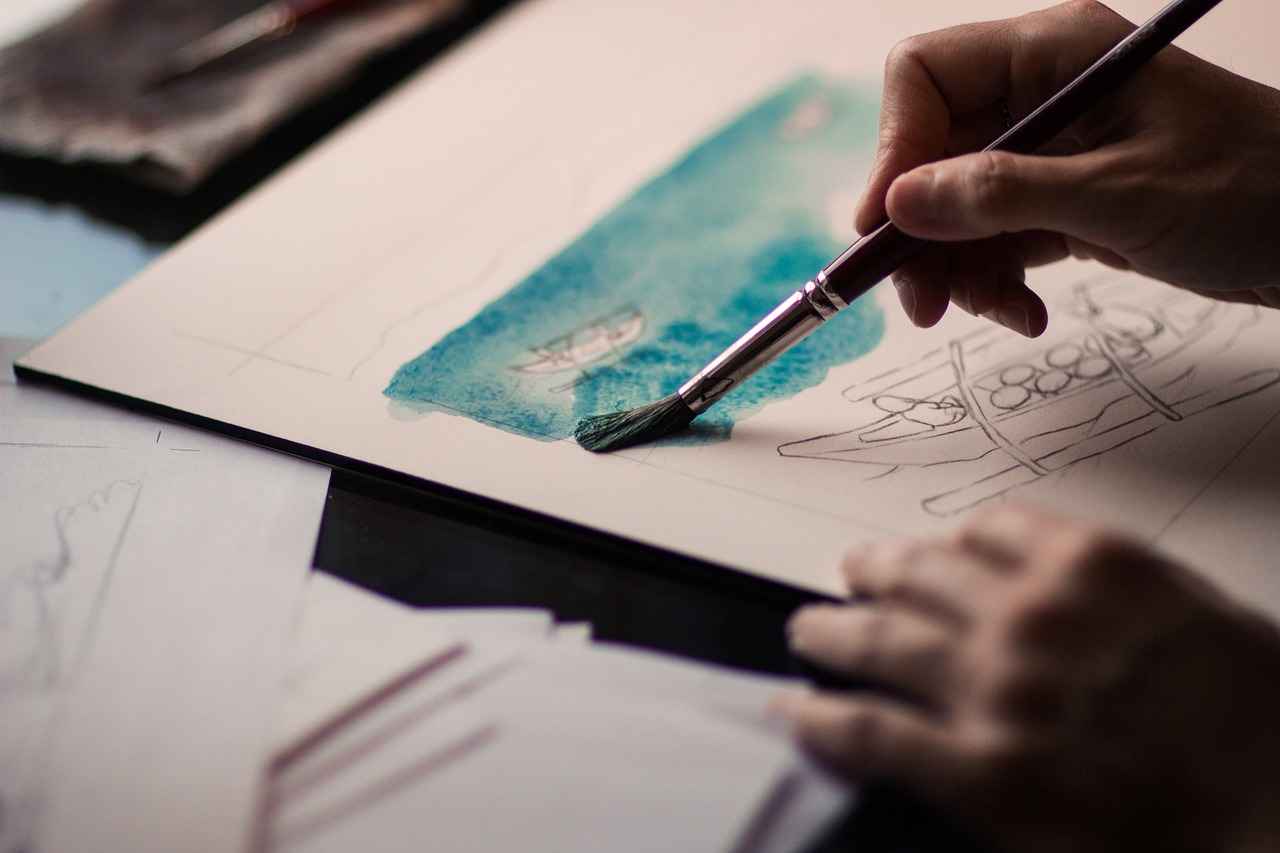
What Are the Best Paint Options for Bumper Painting?
When it comes to bumper painting, selecting the right paint is essential for achieving both durability and an appealing finish. The paint you choose can significantly influence the overall look and longevity of your bumper, making it crucial to understand the various options available. This section will explore different paint types, including enamel, urethane, and specialty options tailored for automotive applications.
There are several paint types that are popular for bumper painting, each with its unique characteristics:
- Enamel Paint: Known for its durability and resistance to fading, enamel paint provides a hard finish that can withstand various weather conditions. It’s an excellent choice for those seeking a long-lasting solution.
- Urethane Paint: Urethane offers superior chemical resistance and flexibility, making it ideal for automotive applications. This type of paint is less likely to crack or chip, providing a robust finish that can endure the rigors of daily driving.
- Specialty Paints: These include products designed for specific needs, such as metallic finishes or textured coatings. Specialty paints can enhance the appearance of your bumper and provide unique visual effects.
Investing in higher-quality paint is crucial for ensuring a long-lasting finish. Premium paints typically contain better pigments and resins, resulting in:
- Enhanced Color Retention: High-quality paints maintain their color over time, resisting fading from UV exposure.
- Improved Adhesion: Quality paints adhere better to surfaces, reducing the likelihood of peeling or chipping.
- Greater Durability: Premium options are often more resistant to scratches and chemicals, providing a tougher finish.
Achieving a seamless color match for your bumper can be challenging. Here are some tips to ensure your newly painted bumper blends perfectly with the rest of your vehicle:
- Use a Color Code: Most vehicles have a paint code located on the driver’s side door jamb. This code can help you find the exact shade for your car.
- Test Swatches: Before committing to a full paint job, test small swatches to compare colors in different lighting conditions.
- Professional Color Matching: Many automotive paint suppliers offer color matching services to ensure precision.
In addition to the type and quality of paint, consider the following factors:
- Environmental Impact: Some paints emit volatile organic compounds (VOCs) that can be harmful. Look for low-VOC options to minimize environmental impact.
- Application Technique: The method of application (spray, brush, or roller) can affect the final outcome. Make sure to choose a paint compatible with your application technique.
- Finish Type: Decide whether you want a matte, glossy, or satin finish, as this will influence the paint you select.
Ultimately, selecting the right paint for bumper painting is a multi-faceted decision that can greatly affect the appearance and durability of your vehicle. By understanding the different options available and considering factors such as quality, color matching, and environmental impact, you can ensure a successful paint job that enhances your car’s overall look.
How Does Paint Quality Affect Longevity?
When it comes to painting your car bumper, the choice of paint can significantly influence the overall outcome and longevity of the finish. Investing in higher-quality paint is not just about aesthetics; it can also enhance the durability and lifespan of your bumper’s appearance. This section delves into the benefits of premium paints and how they impact the longevity of your bumper finish.
Premium paints are formulated with advanced technology that offers superior adhesion, color retention, and resistance to environmental factors. Unlike lower-quality options, which may fade or chip over time, high-end paints provide a more robust protective layer. This means that your bumper will not only look better but will also withstand the elements more effectively.
- Enhanced Durability: Premium paints are designed to resist scratches, chips, and fading, ensuring that your bumper maintains its fresh look for a longer time.
- Better Color Match: High-quality paints often come with a wider range of colors and finishes, allowing for a more precise match to your vehicle’s original color.
- Improved Finish: The application of premium paint typically results in a smoother, more professional-looking finish, which can enhance the overall appearance of your vehicle.
- Longer Lifespan: Investing in quality paint can extend the time between necessary touch-ups or repainting, saving you money and effort in the long run.
The longevity of any paint job, including bumper finishes, can be compromised by environmental factors. High-quality paints often include additives that provide better resistance to UV rays, moisture, and temperature fluctuations. This means that they are less likely to degrade when exposed to harsh weather conditions, ensuring that your bumper remains in top condition.
When selecting high-quality paint for your bumper, consider the following:
- Look for brands that are well-reviewed and trusted within the automotive industry.- Check for specific features such as UV resistance, scratch resistance, and ease of application.- Ensure that the paint is compatible with your bumper material (plastic, metal, etc.).
While high-quality paint can significantly improve the final appearance of your bumper, the application technique is equally important. Whether you choose to paint your bumper yourself or hire a professional, using premium paint will yield better results, provided that the surface is adequately prepared and the application is done correctly.
Ultimately, the decision to invest in premium paint comes down to your priorities. If you value a long-lasting, visually appealing finish that can withstand the rigors of daily driving, then opting for high-quality paint is a wise choice. The initial cost may be higher, but the benefits of durability and reduced maintenance can make it a worthwhile investment in the long run.
What Are the Color Matching Considerations?
When it comes to painting your car’s bumper, achieving the perfect color match is essential for a seamless appearance. This process can be quite challenging due to various factors that influence how colors blend. This section delves into the techniques and tools that can help ensure your newly painted bumper harmonizes with the rest of your vehicle.
Color matching is not just about selecting a paint that looks similar; it also involves understanding how light interacts with different surfaces. Factors such as lighting conditions, the age of the vehicle’s paint, and the finish type can all affect how colors appear. For instance, a bumper painted in bright daylight may look different than the same bumper viewed under artificial light.
- Use a Color Matching Tool: Invest in a color matching device or take your vehicle to a professional that uses advanced technology to analyze the existing paint color.
- Sample Testing: Before committing to a full paint job, apply a small amount of the selected paint on an inconspicuous area of the bumper to see how it reacts to the vehicle’s original color.
- Layering Techniques: Apply multiple thin layers of paint rather than a single thick coat. This approach not only improves the finish but also allows for better blending with the existing color.
Several tools can assist in achieving the right color match:
- Paint Code Lookup: Most vehicles have a paint code located in the door jamb or under the hood. This code can guide you in selecting the exact color used by the manufacturer.
- Color Swatches: Obtain color swatches from your local paint supplier to compare with your vehicle’s color in various lighting conditions.
- Online Color Matching Services: Many paint companies offer online services where you can upload a photo of your vehicle to receive color matching recommendations.
While DIY methods can be cost-effective, hiring a professional might be worth considering for a flawless finish. Professionals have access to high-quality tools and expertise that can ensure a better color match. They can also provide additional services, such as blending techniques that make the transition from the new paint to the old paint virtually invisible.
In summary, achieving a perfect color match for your bumper involves a combination of the right techniques, tools, and sometimes professional assistance. By understanding the challenges and utilizing available resources, you can ensure that your newly painted bumper blends seamlessly with the rest of your vehicle, enhancing its overall appearance and value.
Frequently Asked Questions
- What is the average cost of painting a bumper?
The average cost can range between $300 to $800, depending on factors like bumper material, paint quality, and local labor rates. It’s always a good idea to shop around for quotes!
- Can I paint my bumper myself?
Absolutely! DIY bumper painting can save you money, but it requires some skills and the right supplies. Make sure to have sandpaper, primer, and automotive paint ready before you start!
- What materials do I need for DIY bumper painting?
You’ll need paint, primer, sandpaper, masking tape, and protective gear like gloves and a mask. Having a clean workspace is crucial for a smooth finish!
- When should I hire a professional?
If your bumper has significant damage or if you want a flawless finish, it’s best to hire a professional. They have the tools and experience to ensure a top-notch result!
- How does paint quality affect the outcome?
Higher-quality paint usually lasts longer and provides a better finish. Investing in good paint can save you from frequent touch-ups down the road!
- What if I need a specific color match?
Color matching can be tricky! Many auto shops offer color matching services, and using a paint code can help you achieve that perfect blend with your vehicle.

